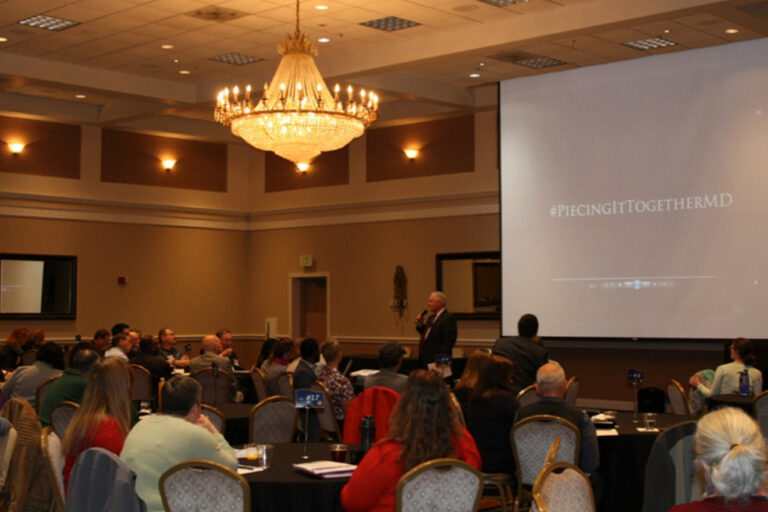Today's Top Picks

Maryland’s Approach for Raising the Resilience Index
Threats, whether natural or manmade, have the ability to negatively impact communities. Although government agencies serve communities before, during, and after disasters, emergency management officials understand the realities of gaps that exist in disaster management systems exclusively managed by government. There is a mounting cognizance of the need for effective communication and coordination from a broad range of stakeholders to reduce the negative effects of a given disaster.

Indiana’s Emergency Response Guidelines for School Safety
The 2016 Legislative Session of the Indiana General Assembly passed Senate Enrolled Act 147 requiring the Indiana Department of Homeland Security (IDHS) to establish minimum standards and approve best practices no later than 1 July 2017 for a school emergency response system. The new guidelines are helping to improve school safety and security across the state and offer a template for other states to consider when reviewing and updating their emergency response systems.

10 Questions for Selecting Business Continuity Software
Being resilient when faced with an emergency or catastrophic event requires preplanning to ensure that operations can continue with minimal interruption throughout the event or restart soon after the event. Business continuity software can help bridge the continuity gap during these times. Answering these 10 questions before purchasing will help ensure a good match between the software and the user.

Emerging Threats to Rail Infrastructure: Part I, Freight
There is a desire for some bad actors to target rail systems, especially the hazardous materials freight rail network. This threat underscores the need for the rail transportation industry to maintain and strengthen partnerships with federal, state, and local authorities.

Remember the Past, While Imagining the Future
The imaginations of television and filmmakers are often used to create futuristic worlds, with technologies that can be used as tools or as threats. Unmanned aircraft systems (UAS) are one such technology that is now off the screen and often seen in the sky. Like “The Jetsons” of the early 1960s, the airways offer many opportunities to transport people and objects from one place to another. With increased travel and transport, though, emergency preparedness, response, and resilience professionals must address the potential benefits of this technology as well as regulations and enforcement issues that could hinder daily and disaster operations. In a worst-case scenario, terrorists could conduct attacks using UAS equipped with explosives, weapons, or dispersal devices for chemical, biological, or radiological materials.
Trending
 Bridging Communication Gaps: Lessons from Hurricane Helene by Greg Hauser Hurricanes in 2024 caused widespread damage to infrastructure, leading to a critical but often overlooked issue: isolation. Physical and technological…
Bridging Communication Gaps: Lessons from Hurricane Helene by Greg Hauser Hurricanes in 2024 caused widespread damage to infrastructure, leading to a critical but often overlooked issue: isolation. Physical and technological… A Systems Thinking Approach to Improving Emergency… by William Chapman “PACE” planning helps organizations fail gracefully, but systems thinking reduces the likelihood of failure altogether. Combining both approaches helps organizations…
A Systems Thinking Approach to Improving Emergency… by William Chapman “PACE” planning helps organizations fail gracefully, but systems thinking reduces the likelihood of failure altogether. Combining both approaches helps organizations… Disaster Stress Management in an Emergency Operations Center by Mary Schoenfeldt Disasters affect responders and community members, but they also bring trauma to those working inside emergency operations centers. Distance from…
Disaster Stress Management in an Emergency Operations Center by Mary Schoenfeldt Disasters affect responders and community members, but they also bring trauma to those working inside emergency operations centers. Distance from… Why Emergency Management Is a Good Career for… by Mathew Perrill For many service members, the transition from the military to a civilian workforce can be challenging. They have been trained…
Why Emergency Management Is a Good Career for… by Mathew Perrill For many service members, the transition from the military to a civilian workforce can be challenging. They have been trained…Trending
 Disaster Stress Management in an Emergency Operations Center by Mary Schoenfeldt Disasters affect responders and community members, but they also bring trauma to those working inside emergency operations centers. Distance from…
Disaster Stress Management in an Emergency Operations Center by Mary Schoenfeldt Disasters affect responders and community members, but they also bring trauma to those working inside emergency operations centers. Distance from… Why Emergency Management Is a Good Career for… by Mathew Perrill For many service members, the transition from the military to a civilian workforce can be challenging. They have been trained…
Why Emergency Management Is a Good Career for… by Mathew Perrill For many service members, the transition from the military to a civilian workforce can be challenging. They have been trained… Bridging Communication Gaps: Lessons from Hurricane Helene by Greg Hauser Hurricanes in 2024 caused widespread damage to infrastructure, leading to a critical but often overlooked issue: isolation. Physical and technological…
Bridging Communication Gaps: Lessons from Hurricane Helene by Greg Hauser Hurricanes in 2024 caused widespread damage to infrastructure, leading to a critical but often overlooked issue: isolation. Physical and technological… A Systems Thinking Approach to Improving Emergency… by William Chapman “PACE” planning helps organizations fail gracefully, but systems thinking reduces the likelihood of failure altogether. Combining both approaches helps organizations…
A Systems Thinking Approach to Improving Emergency… by William Chapman “PACE” planning helps organizations fail gracefully, but systems thinking reduces the likelihood of failure altogether. Combining both approaches helps organizations…Trending
Bridging Communication Gaps: Lessons from Hurricane Helene by Greg Hauser Hurricanes in 2024 caused widespread damage to infrastructure, leading to a critical but often overlooked issue: isolation. Physical and technological…
A Systems Thinking Approach to Improving Emergency… by William Chapman “PACE” planning helps organizations fail gracefully, but systems thinking reduces the likelihood of failure altogether. Combining both approaches helps organizations…
Disaster Stress Management in an Emergency Operations Center by Mary Schoenfeldt Disasters affect responders and community members, but they also bring trauma to those working inside emergency operations centers. Distance from…
Why Emergency Management Is a Good Career for… by Mathew Perrill For many service members, the transition from the military to a civilian workforce can be challenging. They have been trained…
Domestic Preparedness Journal
Featured in this issue
- Special Units and Underutilized Resources
- Law Enforcement and Multidisciplinary Teams
- Public Order Policing Units in Disasters
- State Defense Forces in Emergency Response
- Emergency Carcass Operations
- Wildfire PREsponse: Closing the Gap With Mitigation
- Scouts and the Value of Prepared Youth
- Service Dogs: What First Responders Need to Know
- Emergency Management for Transitioning Veterans
- Podcast – Reframing Hurricane Response: Craig Fugate on Survivors as a First Line of Defense
- Podcast – Built to Serve: Chief Jeffrey J. Wittig on TIFMAS, Teamwork, and Emergency Response
Articles Out Loud

Article Out Loud – Law Enforcement Collaboration Within Multidisciplinary Teams
June 25, 2025
This is an article by Richard Schoeberl and Anthony (Tony) Mottola, an Article Out Loud from Domestic Preparedness, June 25,

Article Out Loud – State Defense Forces: The Untapped Backbone of Emergency Response
June 25, 2025
This is an article by Robert Hastings, an Article Out Loud from Domestic Preparedness, June 25, 2025. As disasters become






The Presidency & Control of Nuclear Weapons